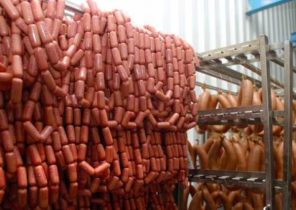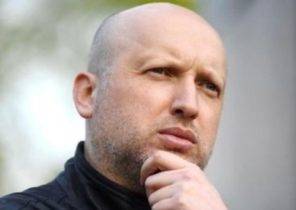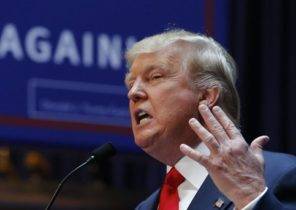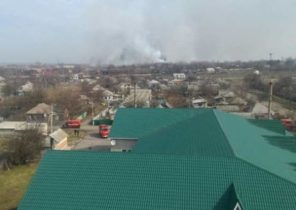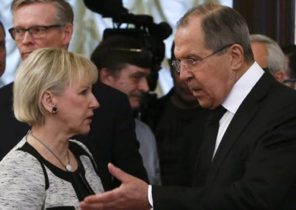
Federal budget 2017 suggests that in the coming year, Russia’s Reserve Fund will be exhausted. Then he will start to spend the national welfare Fund (NWF). Some experts believe that Russia would begin to spend its gold and currency reserves (GCR) for internal needs. What are these savings today and how justified their integrity, found out DW.
Funds and reserves — what is the difference
Foreign exchange reserves are highly liquid assets under the control of the Central Bank of Russia. They consist of funds in foreign currency securities of other States, funds on Deposit in foreign banks, special drawing rights (non-cash means of payment issued by the IMF), monetary gold and other instruments.
Part of the gold reserves are the Reserve Fund and national welfare Fund (together, they comprised the former Stabilization Fund) in their currency. The difference between funds and reserves is that the Reserve Fund and national welfare Fund are managed by the Ministry of Finance. That is, “when you say that the Reserve Fund is exhausted, this means that the Treasury sells the Reserve Fund at the market rate to the Central Bank to cover budget deficit,” says the Professor of Finance at the new economic school (NES), Oleg Shibanov.
As reported on the website of the Ministry of Finance, as of December 1, 2016, the Reserve Fund was $ 31.3 billion (previous year to 59.4 billion us dollars). NWF — 71 billion (on 1 December 2015 and 72 billion dollars). The size of the reserves as a whole, according to the Central Bank in mid-December, 379 billion.
How to change the size of the reserves since the early 2000s
For 16 years the volume of Russian gold reserves rose by 14 times. In December 2000, he was only 27 billion dollars. Further dynamics consisted in the gradual growth. Maximum uplift (year-on-year) occurred in 2007: then the volume of gold reserves for the 12 months increased from 296 to 467 billion dollars. And the next year witnessed the first decline by 30 billion.
In mid-December of 2015, the volume of gold reserves was $ 371 billion. Thus, in 2016 there was a slight increase — a total of 8 billion dollars.
According to Oleg Shibanov, 14-fold increase in gold reserves is due to a combination of macroeconomic factors and economic policy pursued by the authorities. “Mainly, it was a team effort of the former Minister of Finance Alexey Kudrin. His idea to save for the future, rather than spending, it was strange, but was absolutely normal in the world of cut like an expert. — The stabilization Fund helped to smooth out fluctuations in macroeconomic variables and their impact on the Russian market.”
Impact of oil and the dollar
As for macroeconomic factors, the main role is played by oil prices and exchange rates. The higher the world price, the more tax revenues received from the Russian state and converted them into reserve funds, which are included in the gold reserves. “Accordingly, when they were saved, and increased foreign exchange reserves,” — says Shibanov.
The influence of the dollar was especially pronounced in the period, while the Central Bank has not announced that it will no longer control the ruble. While the course was manageable, the Central Bank affect it through intervention. “When the ruble is excessively strengthened, the Central Bank started to buy dollars, in the opposite situation — on the contrary. Thus, there was a need to spend or accumulate gold reserves when created strong pressure on the exchange rate,” the expert told DW.
There are other factors that have more of a “paper” character. Speech, in particular, about the specifics of the assessment of the amount of reserves. Like the Professor said NES, “raportoida they are in dollars, so when the value of the Euro or gold falls against the dollar and reduced gold reserves. This is happening on paper”. This includes REPO transactions (a tool introduced by the Central Bank at the end of 2014), in which banks gave the Central Bank the ruble Deposit, and in exchange received currency for a while. The money is also deducted from the reserves, but, as a rule, then go back.
China — champion, Russia — 6, USA — 18
If you compare the volume of gold reserves of various countries, we can see that Russia, according to the IMF in February 2016, is in 6th place in the world. It was preceded by China, Japan, Saudi Arabia, Switzerland and Taiwan. Germany and the United States are only in the second ten: Germany 11, United States on the 18th.
As stated DW is head of the Department of international capital markets, Institute of world economy and international relations RAS Yakov Mirkin, a direct connection between the volume of gold reserves and the stability of the economy: “the United States have low volume because they are global Issuer. In their currency to keep their reserves. Developed countries with stable currency with a stable economy, can afford to keep much smaller gold reserves than those who depend on the oil price and the dollar”.
Do I have to spend: pros and cons
In the expert community there are several positions regarding how to dispose of gold reserves. For example, the head of the Center for economic research Institute of globalization and social movements (IGSO) Vasily Koltashov believes that the reserves can be used to restore the industrial engineering industry and to create jobs. Particularly effective, he said, it will be in terms of protectionist policies.
Oleg Shibanov in this sense does not see. He believes that to support the industry need by other means, in particular, subsidizing tax rates. As for gold reserves, then it is better to remain a “safety cushion”. Yakov Mirkin holds a middle position. According to him, the question of whether to spend the reserves, it will be necessary to decide based on the situation in the coming year: “If the price of oil will be higher than 50-55 dollars per barrel, will stabilize the economy, and then bother to spend the gold reserves will not.”


